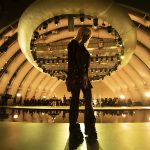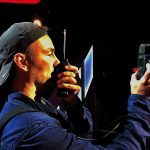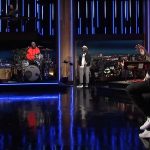As Major League Baseball (MLB) heads into the playoffs, we thought it should be noted how good the New York Yankees have looked this season… that is to say how good they’ve looked under the new lights at Yankee Stadium. Prior to the 2016 season, the Yankees organization completely replaced its High Intensity Discharge (HID) sports lighting with a fully LED-based lighting system. Through this lighting retrofit process, they seriously cut their energy bills and significantly improved the quality of the on-field lighting for both the fans and the players.
Yankee Stadium was actually the second MLB ballpark to go with a solid-state lighting system, following the LED lighting upgrade at the Seattle Mariners’ Safeco Field. Both the Yankees and Mariners new lighting systems were supplied by South Korean LED lighting manufacturer GigaTera, who worked closely with PlanLED, a lighting systems provider who specializes in LED upgrades and retrofits. KCL Engineering provided engineering and installation support.

“Overwhelmingly Positive” Results
“The Seattle Mariners did it and it went incredibly well,” comments Doug Behar, vice president, stadium operations for the New York Yankees. “The good news for us is we’ve had a little bit of time to improve on the technology that they have. The response to the LED conversion of Yankee Stadium has been overwhelmingly positive. Plus all these benefits were achieved in a stunningly short amount of time. The installation took two weeks and the demanding MLB inspection approval process took less than one week.”
The original Yankee Stadium lighting system consisted of a total of 884 HID lights of wattages from 1,000W to 2,000W. In the new lighting upgrade, a total of 692 of the 1,000W GigaTera SUFA A LED fixtures were used, moving from an original power draw of 1,303kW down to 692kW. That represents an almost 47 percent savings of electricity. These improvements mean that during one night game, nearly 207,000 pounds of CO2 emissions are saved. Another benefit of using a solid-state lighting system versus HID lights is that LEDs power on to full brightness — and full color temperature — immediately; there’s no warm up time waiting for HID lights to get to the proper level of output and color. The ability to program and have instant response now allows the stadium lights themselves to be programmed to chase, wave, and celebrate homeruns or pulse with the beat of concerts.
Each of the SUFA A luminaires have a much narrower beam than the old, large HID lighting fixtures. The new fixtures also have dual heads, doubling the aiming points to 1,384, which provides an improved vertical illumination onto the field of play. The lights now cast a much more even light across the field with fewer shadows. The design of the SUFA A lights, which cuts down on spill onto neighboring properties, also have much less glare than the previous HID lights produced — a fact that is good when looking for a fly ball whether you are a player, fan, or TV cameraman.
Another result of the re-lighting was to even out the lighting levels from the outfield to the infield of the ballpark. The lighting standards set by MLB allow for 20 percent lower foot-candle (FC) settings for outfields than infields in part because of the older, inefficient lights combined with the lighting positions dictated by the designs of most ballparks. This is also an issue for stadiums, including Yankee Stadium, that host other sports like football and soccer. In the way that football fields and soccer pitches are arranged in a traditional baseball stadium, parts of their fields of play will have different lighting levels which could potentially effect the players as well as the camera shots.
The manufacturer and installers of the new LED system addressed this imbalance during the installation and aiming process. Lighting levels were set and matched so that the light levels for the outfield portion of the park were raised to meet the light levels of the infield. “The lighting level of the infield is more than 25 percent higher and the level in the outfield is more than 50 percent higher than the last measurements of the HID system in June 2015,” says MLB Official Auditor Michael Owen. “The infield uniformity is approximately the same and the outfield uniformity is much better than the last HID lighting systems’ measurements. All of this is achieved while energy usage is reduced.”

No-Flicker Slo-Mo
With broadcast revenues always important in today’s major sports the value-added benefits of the new solid-state lighting system offering almost completely flicker-free lighting cannot be underestimated. This was an issue that used to be particularly highlighted when the broadcaster aired a slow motion replay. Because HID lights flicker at 120Hz, the TV engineers were limited to shooting slow motion replays at a maximum of 180 Frames Per Second (FPS). If they shot at a higher frame rate, the viewer would see an obnoxious flickering effect. This issue is all the more magnified by High- and Ultra High-Definition TVs. While the previous HID lights would test with a 52 percent flicker rate, field testing of the new LED lighting system shows that it produces a flicker rate of a mere 0.2 percent. Now broadcasters can produce ultra-slow motion replays shooting up to 1,000 FPS without exhibiting any perceptible flicker.
Since HID lights have a limited color spectrum to begin with, they can’t truly reproduce colors well. Under the new LED lighting systems, colors on the field pop more to the human eye of fans in the stands and look more realistic to the lenses of the broadcast cameras for fans watching on television. The new LED lighting system renders colors better since they are closer to natural light than HID sources.
The Yankees’ Behar concludes by saying, “Making the transition to LED preserved the Yankee’s commitment to providing the best venue for fan entertainment while reducing our energy consumption and environmental footprint.”
Since the Yankees’ installation, more MLB ballparks are following suit and have made the switch to LED lighting systems. When the first pitch was thrown out to start the 2016 season, San Diego CA’s Petco Park, home of the San Diego Padres and the Houston Astro’s Minute Maid Park both featured new Musco Lighting solid-state lighting installations. The Texas Rangers’ Globe Life Park in Arlington, TX has retrofit with a new Ephesus Lighting LED lighting system. It will be interesting to watch as other stadiums go the solid-state lighting route.



